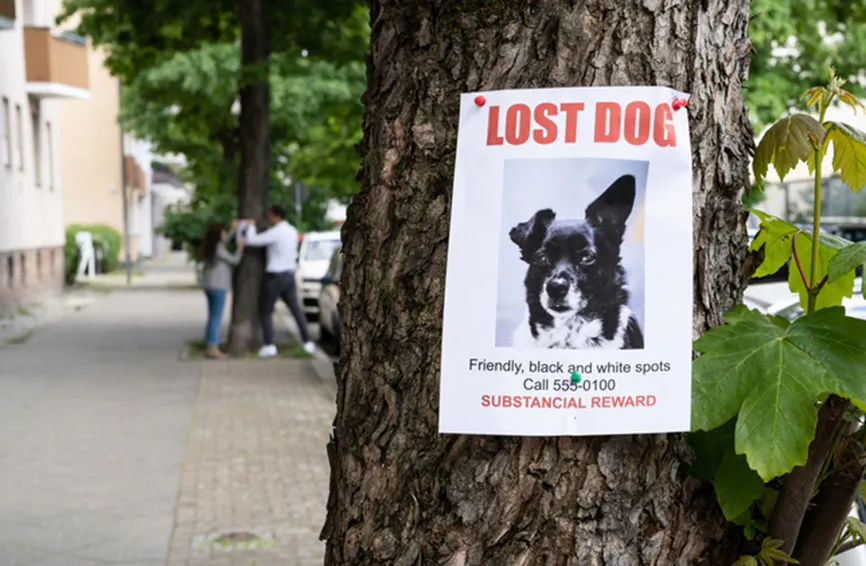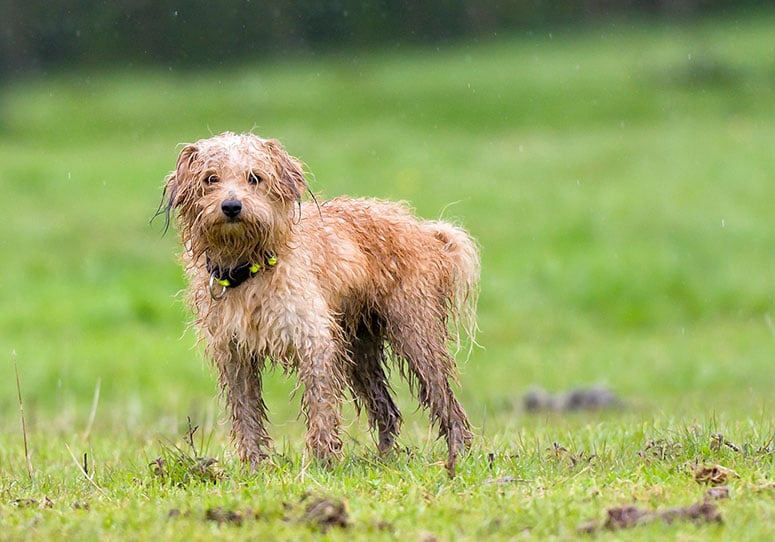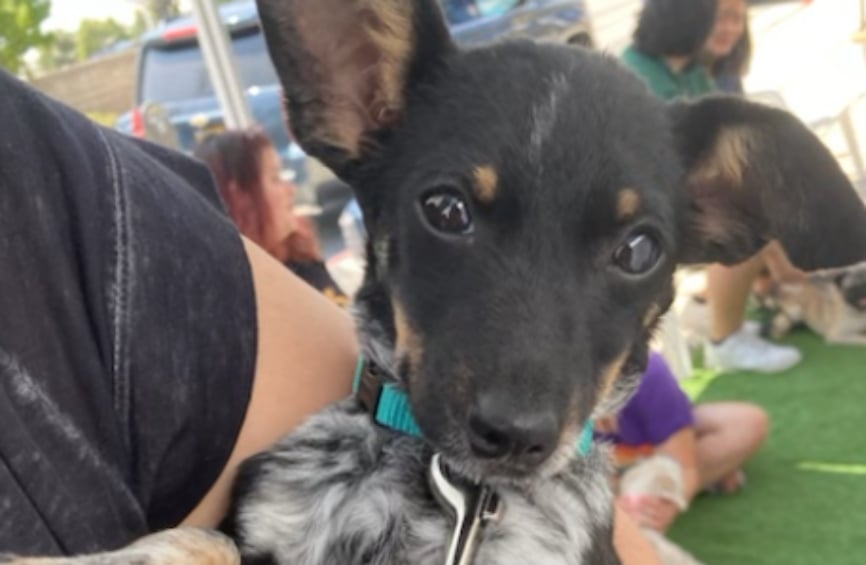Key Takeaways
- Losing a pet is one of the most stressful situations for pet parents. If it happens, try to stay calm and make a plan.
- Pets vary in how far they may go, and where. It’s essential to know the differences in how cats and dogs behave; how the pet’s temperament plays a role, and how the weather and environment can influence lost pets.
- Using the appropriate search method, getting the word out to the community and using tools such as trail cameras and humane traps will provide the best hope of getting your beloved furry friend back.
Table of Contents
Whether they run out an open gate, run off while on a hike, or slip their collar, having a pet become lost is one of the most stressful and heartbreaking situations for pet parents.
If it happens to you, don’t despair. Act quickly and follow the advice of pet loss experts to recover your dog or cat before they get hurt. While your first reaction is likely to be panic, finding your pet will be most successful by stepping back, making a plan, becoming organized, utilizing proper techniques, and attacking the situation logically.
Robert Smith, the author of several books on finding lost pets, describes the steps to take to find lost pets in his eBook “Finding Your Lost Pet”. Here is his advice:
Understand why your pet is missing
Smith says that understanding why your pet went missing is crucial to finding them. Most pets initially go missing because of their actions or people’s actions. In rural areas, or during a hike, a dog may run off after a wild animal. If it’s a rescue dog who has been traumatized, they might simply get spooked and run. Outside Magazine recently featured a podcast about Scott and Shelby Prue, whose newly rescued dog Holly bolted into the woods when she heard a gunshot. The more they got close to her, the further she ran. The couple was so dedicated to the dog that they camped for 106 days until they finally trapped her, with the help of professionals.
In urban areas, pets may be lost for more nefarious reasons—they may have been stolen, captured, and taken to a shelter or taken in by someone who assumed they were abandoned without checking for a microchip. Because of their curious nature, some pets, especially cats, often become trapped. Cats may also hop into a vehicle that is then driven away. Knowing the reason will help focus your search.
Don’t call your dog
It may seem like the most logical thing in the world to call for your dog when they are lost, but the experts at the Missing Animal Response Network (MARN) say this is a mistake. This is especially true if your dog is skittish, has had a traumatic past, or for any dog that doesn’t know you. If your dog runs off because of fireworks, thunder, or a scary event, they may be so terrified they won’t even come to their pet parent. This video illustrates how a dog ran from his owner, who he hadn’t seen for several months until he figured out who she was. Calling a dog can cause them to run from you, and then the instinct is to run after them, which is the worst thing you can do, the experts said. The exception to this rule would be if you have a gregarious dog who is comfortable with everyone.
Calming signals
The best approach is to attract dogs to you with calming signals rather than chasing them. Instead of calling, either stay silent or try singing any tune. With singing, your dog will hear your voice, and it will sound less fearful than the sounds made by other people who have called and tried to catch the dog.
If you encounter your dog while searching, you should still refrain from calling or coaxing him. Instead, sit down and look away, which shows submissiveness. Your body language should say that you are ignoring or haven’t noticed them. If you have treats, make a crinkling sound with the bag and drop some on the ground. Be aware that when dogs are in full fight or flight mode, the olfactory section of their brain closes down. That’s why sometimes trying to feed a hotdog to a panicked dog doesn’t work, MARN says.
Here’s a video showing how a child was able to approach a dog that had been running for two months by lying down and behaving calmly.
Dog vs. cat behavior
Dogs and cats vary substantially in their behavior when they are lost. The methods used to search for a lost dog, an outside cat who has vanished from his territory, and an indoor cat who has escaped his house are entirely different.
How lost dogs behave
Dogs tend to travel longer distances than cats and are more likely to be picked up by rescuers or other people.
The dog’s temperament will also determine how they behave when lost. Smith identifies three personality types in dogs – gregarious, aloof and xenophobic (fearful of unfamiliar things). Here are the search techniques for each type of dog:
- Gregarious – Very friendly dogs are inclined to go directly to the first person who calls them. These dogs are generally found close to home or picked up by someone close to the escape point. Gregarious dogs are at risk of being “adopted” by people who find and keep them rather than taking them to a shelter.
- Aloof – Aloof dogs are wary of strangers and will initially avoid human contact. Eventually, they might be willing to approach people once they have overcome fear and are hungry. While these dogs can travel a great distance, aloof dogs eventually can be enticed with food and patience, typically by owners or volunteers who know how to approach and capture a wary dog.
- Xenophobic (fearful of unfamiliar things) – Dogs with xenophobic temperaments (due to genetics and/or puppyhood experiences) are more likely to travel farther and are at a higher risk of being hit by cars. When a skittish dog is spotted it is beneficial to sit down or lie down to show you are non-threatening. Show other ways you are not to be feared by yawning while looking away with your head turned slightly away from the direction of the dog and making no sudden movements. Some of these panic-stricken dogs even run from their pet parents. It may be necessary to use a “magnet dog” (a gentle dog that likes other dogs), to get close enough to capture a fearful dog or use baited humane traps.
How lost cats behave
Lost cats don’t travel far, are usually easier to find, and are less likely to be picked up by other people. However, they are more at risk from predators, such as coyotes, than dogs.
The behavior of a lost cat will vary depending on where it has established its territory. An outside cat who suddenly vanishes could have had something happen to interrupt its return home. It could be trapped or injured. Cats who are sick, injured, or panicked will often hide in silence. They may hide for weeks or never come home, while others may just hide for a few hours.
An inside cat who happens to get out will usually look for the closest place to hide and feel protected. Baited humane traps are highly effective for recovering displaced, panicked cats who are hiding and hungry.
An injured or frightened cat may not meow when its owner calls for it. To rule out this possibility, try to obtain permission from your neighbors to go into their yards and search for your cat yourself. Look under and in everything.
Besides being either indoor or outdoor cats, cats have complex personalities, and individual cats can be classified as one of four temperaments: curious, standoffish, cautious, and fearful. Below is how each personality is likely to react and the best search method for each:
- Curious – When displaced, cats of this nature might initially hide, but then they will roam. The best initial strategy for recovery is to place fluorescent, lost-cat posters within a minimum five-block radius. Also, you should interview neighbors in a door-to-door search and thoroughly check possible hiding places in nearby yards and other areas close to the escape point.
- Standoffish—The strategy for finding a cat of this temperament is to search nearby hiding places, interview neighbors, and search their yards. If these efforts are unsuccessful, consider setting a baited humane trap.
- Cautious – When displaced, cautious cats are likely to immediately hide in fear. If not scared off from a hiding place, the cat typically returns to the point from which he escaped or meows when the owner comes to look for him. The best strategy for cautious cats is to conduct a tightly focused search on neighboring properties and then set a baited humane trap.
- Fearful – When in new surroundings, nervous cats dart and then hide in silence, almost immobilized with fear. They are often mistaken as untamed or feral. The primary strategy to recover these fearful cats is to set baited humane traps.
Environmental factors for lost pets
Other factors in a pet’s disappearance are weather, terrain, and population density. Here are some examples:
- A dog that escapes in a city will travel a shorter distance than a dog that escapes in the mountains or in farmland. Fences that create barriers will influence a dog’s travel since they tend to take the path of least resistance.
- A dog that escapes on a beautiful spring day may travel farther than one that escapes during a snowstorm. Extreme weather conditions such as snow, hail, rain, and heat will decrease the distances that lost dogs travel because they are likely to seek shelter and stay in one place.
- Terrain such as heavy brush and steep cliffs can influence whether a dog continues on a certain path or changes directions.
- A dog’s appearance can influence how quickly it is picked up by a rescuer. Most people are more likely to grab a friendly-looking dog and less inclined to take a pit bull or similar dog they perceive as aggressive. People are more likely to pick up small dogs because they look vulnerable and are easier to transport.
- A dog who escapes in the middle of the night will travel farther before being seen than a dog who escapes during the daytime.
Types of searches
‘Area search’ method
The author says methods that experts use to find people can also be applied to pets. One such technique is “area search,” a systematic approach to scouring a specific location, considering factors like terrain, environmental conditions, and the pet’s behavior.
In an area search, the searcher works a systematic grid-type search of the area. The search area is determined based on the pet species’ typical behavior and the animal’s individual behavior. The geographical features or terrain of the area will also be a factor.
Two concepts applied here are:
- Probability of area (POA) assesses the likelihood of your pet being in a particular area.
- Probability of detection (POD) estimates the chances of successfully locating your pet within that area. For example, a fenced-in lot would have a high probability, whereas an open area with places to hide and run would have a lower probability.
Developing a search strategy and understanding the “probability of area” (POA) and “probability of detection” (POD) will help organize an effective search. By adopting a structured approach, planning carefully, and employing proper search techniques, you can increase the odds of bringing your pet home safely.
Hasty search
Acting quickly gives you the best chance of finding your pet near where they went missing. As the name suggests, a hasty search is a rapid search of high-probability areas and is intended to find a lost pet quickly. It’s usually conducted as soon as you realize your pet is missing. The pet parent walks or drives through the immediate area in a hasty search. One disadvantage is that spending that time searching will delay getting the word out to neighbors or others who may have seen the pet.
Efficient area search
An efficient area search is a systematic, detailed search of high-probability areas.
Before any search begins, think about your lost pet’s behavior. Consider the geographical features and terrain of the area to be covered, environmental factors, and the typical lost pet behavior of dogs or cats. These three factors determine the size of the area that initially needs to be searched.
Unlike a hasty search, an efficient search involves contacting neighbors and potential witnesses to determine if anyone has seen or heard anything unusual. Neighbors who catch a glimpse of a cat matching the description of the lost cat can help narrow the search area and increase the probability of recovery. Look for evidence, such as tufts of fur or tracks, while looking in every possible hiding place. These are clues that might be overlooked in a hasty search and can lead to the discovery of the pet.
Thorough area search
A thorough area search is a slow, meticulous search of an area. It is used for animals who are not likely to travel very far, such as cats. The search involves a slow, methodical, and intense search of a small area. A thorough area search aims to search every square inch of a small area to see if the animal can be located.
Establishing direction
A key to narrowing a search area is establishing the most likely travel direction. A lost dog who could conceivably travel three miles in any direction creates a search area of 28 square miles. One method to discover the lost dog’s direction is to ask neighbors if they have seen the lost dog. Establishing the direction of travel can dramatically reduce the possible search area from 28 square miles down to a manageable three square miles.
Posting fluorescent “Lost Dog” posters along the path the lost dog traveled increases the probability that someone who has seen the dog will see the posters and call the owner.
Get the word out
As soon as your pet has been missing for a few hours and a hasty search has not been successful, it’s time to get help from the community. First, check with any shelters or rescues where your pet might be taken if found.
The more eyes and ears are looking for your pet, the better the chances of finding them. Here are some ways to spread the word:
- Social media – utilize any online tools that are widely used in your area. Facebook may have a community page where lost pets are posted or even a “lost pets” page for your area. Other places to post are NextDoor, Craigslist, and Instagram. The Missing Animal Response Network advises withholding at least one identifying mark or characteristic of your lost pet, in case you need it later to verify that a person has actually found your pet and is not trying to scam you.
- Create flyers and posters. Make them clear and visible.
How to make and where to hang posters
At any typical intersection, you only have five seconds and five words to get your message across to drivers who are passing through the area where your pet is missing, according to Kat Albrecht, a pet detective and search expert.
- Make the posters giant (28″ X 22″) and neon-colored.
- Keep them brief and to the point. Generally, you want the words Lost Dog (or cat), the breed, a brief description, and a phone number. If your pet is timid or may run from strangers, include that. The MARN says not to include your name or your pet’s name and address, for security reasons.
- Include a large, clear photo of your pet.
- Put them at major intersections within a two-to-five-mile radius of where you lost your pet (and in areas of sightings).
How to make flyers
In addition to posters, you should make flyers (8-1/2 – 11”) to hand out to neighbors, vet offices, pet service businesses, shelters, groomers and to post on community boards. The flyers can contain more information than the posters, such as a detailed description, the location and date the pet was last seen, and whether the pet is timid or fearful.
Offering a reward
Professional searchers are divided on whether offering a reward is useful. Smith says offering a reward will increase the likelihood that someone will see the poster and act on it if they spot the pet. Indeed, when Lady Gaga’s French bulldogs were dognapped at gunpoint a few years ago, the reward of $500,000 seemed to convince an associate of the dognappers to bring the dogs back. Fortunately, Lady Gaga didn’t have to pay the reward because of the woman’s involvement in the theft.
MARN says that large rewards will likely result in scammers, chasing behaviors from money-hungry people, and invalid leads. They say appealing to people’s altruistic nature and love for animals is better.
Consider hiring a professional
If your pet has been missing for a few days and the steps outlined here have not been successful, it may be time to call in a professional if you have the means. Pet Detective is not just a goofy Jim Carrey movie; it’s a growing career field. MARN has a pet detective directory listing 34 professionals, with most states having at least one. These detectives have specialized expertise in finding lost pets and have tools not usually available to the typical pet parent – search dogs, trail cameras, humane traps, night vision cameras and more. Some will do phone consultations and others are willing to travel to help.
Conclusion
If your pet goes missing, try not to panic and make a plan for recovering them. Understanding how cats and dogs behave, your pet’s temperament, and the terrain or environment in which they escaped will help narrow your search.
Unless your dog is gregarious, don’t call out to them while searching, as it could cause them to flee further. Instead, exude calmness and submissiveness to get them to come to you.
Seek community help in finding your pet with social media posts and huge, colorful posters.
If all else fails, consider hiring a professional pet detective, who will have tools such as scent dogs, wildlife cameras and traps that may be used.
For more information on finding lost pets visit lostapet.org or petsearchandrescue.com. Pet Search and Rescue also has a cheat sheet for lost dogs.












